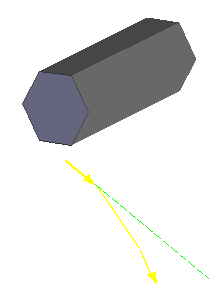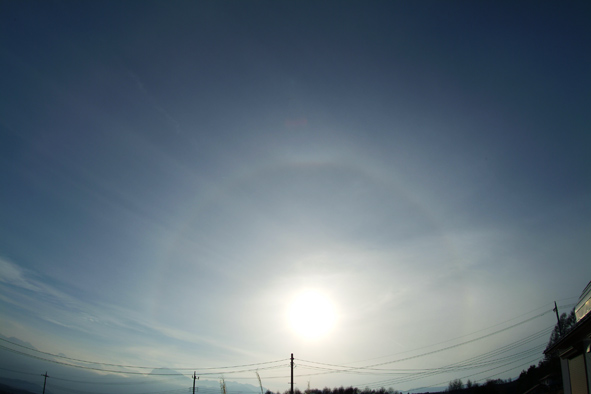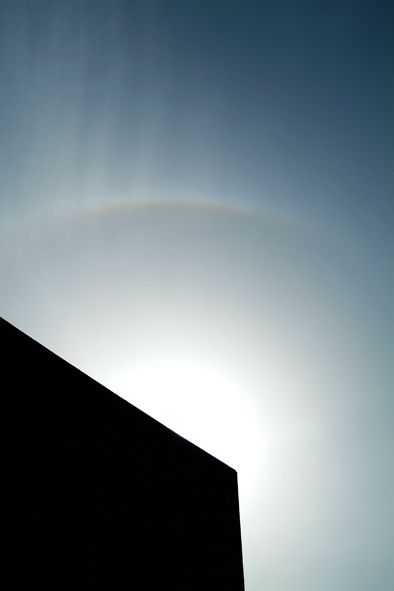The Upper Tangent Arc
Inner halo and upper tangent arc in case of lower solar elevation
| Date & Time: | Feb 25 2006, 16:17 JST(+0900), 1/500sec. Exp. |
| Optical: | SIGMA 15mmF2.8 EX FISHEYE, Aperture: F11.3 |
| Digital Camera: | Fujifilm FinePix S2Pro |
| Location: | Ooizumi, Hokuto city, Yamanashi pref. |
| Camera Settings: | Recording Format...JPEG-FINE(3024×2016) |
| CCD sensitivity...ISO100, White Balance...Auto |
Tangent arc in case of higher solar elevation
| Date & Time: | Apr 15 2006, 14:02 JST(+0900), 1/500sec. Exp. |
| Optical: | SIGMA 15mmF2.8 EX FISHEYE, Aperture: F11.3 |
| Digital Camera: | Fujifilm FinePix S2Pro |
| Location: | Kokubunji city, Tokyo |
| Camera Settings: | Recording Format...JPEG-FINE(3024×2016) |
| CCD sensitivity...ISO100, White Balance...Auto |

Upper: Schematic of ice crystal
Lower: Sunlight path through ice crystal
|
You can rarely see a bright part at the top of solar inner halo (22 degrees halo).
This light looks "V-shaped" when the height of sun is fairly low, and the shape changes to curve contacting with the top of inner halo as solar angle of elevation higher.
This atmospheric optical phenomenon is called "The upper tangent arc".
And symmetrically you can see same phenomenon at the lower edge of inner halo, in that case we call it "The lower tangent arc".
The tangent arcs appear by fine slender hexagonal ice crystals in high altitude sky shown in the right figure.
This type of crystal is floating steady by turning the sides paralleled with ground.
The 22 degrees refracted sunlight can be observed only from the upper and lower parts of the sun.
As the solar angle of elevation higher, we can see the refracted light from off point of top and bottom parts of sun.
In that case the light looks like a gentle curve along the inner halo.
If the sun elevation is higher than 40 degrees, the upper and lower tangent arcs connect and circumvent; we call this state "The Circumscribed halo".
|


